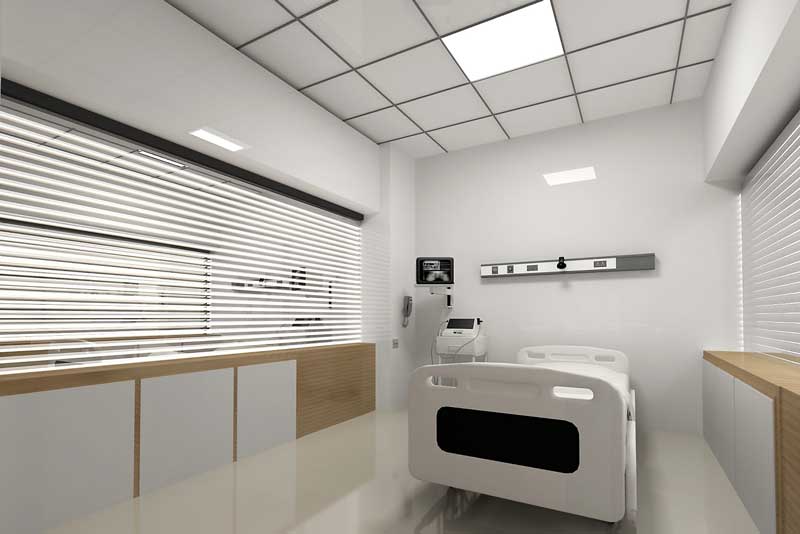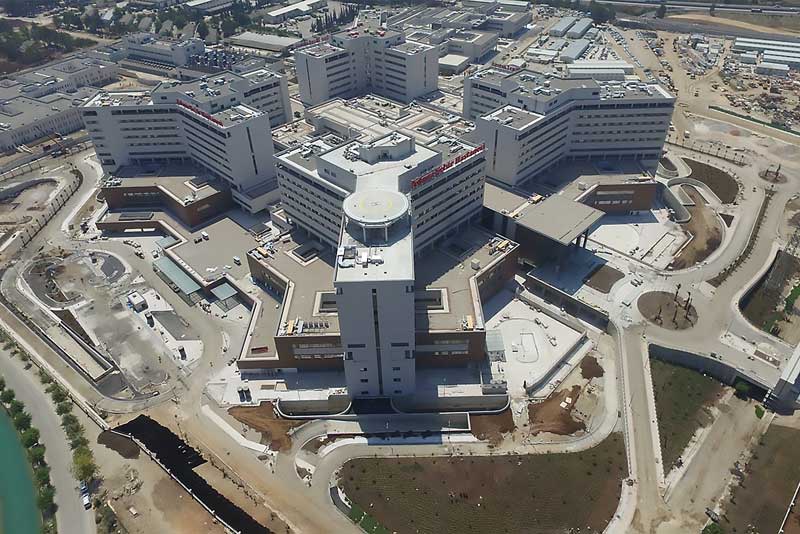In 2003, Zeliha Kutay, a kindergarten teacher from Izmir, nearly lost her baby—and her own life—while giving birth at her local hospital. In the middle of a high-risk delivery in the operating room, an earthquake knocked out power in the city. The decades-old hospital had no seismic isolators, which protect buildings and people in earthquake-prone areas, and the power generator failed.
“It was chaotic and the whole family was worried that the hospital would need to be evacuated,” Kutay says. “Luckily, there were no aftershocks and things went back to normal within a few hours.”
Stories like this were not uncommon in Turkey 15 years ago, when Kutay gave birth. Most of the nation’s health infrastructure was old, out-of-date, and insufficient to meet the country’s growing health-care needs. The system was plagued by chronic issues like high energy costs, earthquake risks, and hospital layouts that did not support modern technologies. Grim outcomes reflected these problems: the infant mortality rate stood at over 26 per 1,000 live births, and less than two-thirds of the population had health insurance, resulting in unequal health-care access among different groups.
Support from IFC and the World Bank has helped Turkey transform its health-care system in significant ways. The government initiated the Health Transformation Program in 2003 and the landmark Health Public-Private Partnership (PPP) program in 2010, aiming to overhaul the system and build 50 hospitals with an estimated value of €20 billion. Plans are on track: today, 15 health-care-related projects in the PPP program are at various stages of tender, financing, and construction, and four hospitals are already operational.
Under the new PPP structure, the private sector funds, builds, and manages the hospitals. It also provides specialized services such as rehabilitation, imaging, and labs. This allows the Ministry of Health to focus on delivering better quality health care, while sharing the financial risks with the private sector.
Some of the new hospitals are already having an impact on the lives of millions of citizens. The City Hospital of Adana, one of the first PPP projects built with the support of the private sector and international financial institutions, became operational last year. The campus comprises six hospitals specializing in different areas, including oncology and women’s and children’s health services, and it has 1,550 beds.
To better respond to the risk of earthquakes, the hospital complex was built with seismic isolators. (It is the second-largest building in the world to do this; the first is Apple’s headquarters in California.)

An Award-Winning Approach
In addition to monitoring the PPP program and engaging early with sponsors, financiers, and Turkish officials, IFC enhanced the bankability of the concession agreements. It also helped catalyze long-term commercial financing, which was unavailable at that level in Turkey at the time.
Under the terms of the program, IFC directly invested $241 million and mobilized more than $540 million in four pioneering projects: the Kayseri Integrated Health Campus, the Etlik Integrated Health Campus, the Adana Integrated Health Campus, and the Elazig Integrated Health Campus. All of these were subsequently recognized with international project finance awards.

The Multilateral Investment Guarantee Agency (MIGA) also teamed up with the project’s lenders and builders by providing political risk mitigation of $855 million to back six projects. The World Bank Group’s umbrella approach helped to successfully launch the program.
Turkey’s experience with PPPs has been an “adventure” that can serve as a model in the region, says Kamil Yanıkomeroglu, Chairman of Rönesans Healthcare Investment, an IFC client that is building several of the hospitals. “[This is an] example to many other countries aiming to adopt similar infrastructure development projects.”
Join the conversation: #IFCimpact
Published in July 2018

